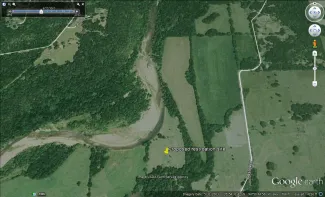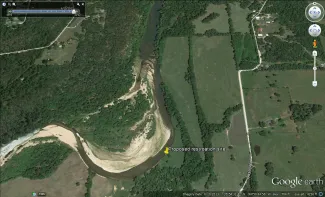We live in a day where water is becoming as valuable as gold, and having free-flowing water across your property is like striking oil. In several countries, it is traded like any other commodity.
Protecting water quantity and quality is something that has often been taken for granted but when it becomes limited its value becomes infinitely apparent. It is recommended that anyone permitted to remove water from a stream use a monitoring/metering system to help conserve the resource.

If you are a landowner lucky enough to have a stream flowing through your property then you likely already know its value. Healthy streams aren’t just good for fish. They help sustain surrounding plants and wildlife while providing water for downstream users including both humans and fish and wildlife.
Streams are dynamic systems and are often misunderstood. For example, building a retaining wall to protect the stream bank on one side of the stream results in the stream shifting and increasing erosion on the opposite bank. Removing gravel from one area will result in downcutting to bed rock in upstream portions. Straightening the stream’s natural curving path and channelizing the stream will speed up water flow and increase bank erosion both upstream and downstream of the action. Removing too much water can lead to a lowering of the water table which can cause a loss of vegetation along the stream bank. These plants are essential for soil stabilization to protect the stream bank from erosion during high flow events. Such activities make for poor relationships with your neighbors.
Although streams are complicated landscape features, protecting them and your property is a simple concept. Recovery or restoration is a complicated and costly endeavor while managing what you have is relatively straightforward and inexpensive. There are some simple things landowners can do to protect the water quality and quantity while also protecting their land.
Fencing cattle away from streams and providing alternative watering sources is preferred but when not an option, landowners should consider allowing controlled access. An electric fence may be one simple method to control limited access of cattle to a stream.
Stream bank erosion can be easily reduced simply by not clearing all land up to the streams edge for farming and limiting fertilization in the near stream area. Any additional short term gain in crop or grass production will be quickly lost if acres are lost to erosion during the next flood.
River and stream systems can quickly erode large tracts of land as shown in these images from 2003 to 2013, especially when the riparian areas aren't properly managed.
Maintaining a mix of native plants including native grasses, trees and shrubs is important in maintaining and protecting a stream. Zones of protection, also known as riparian zones or buffers, can be created and should be as diverse as streams.
These zones can be broken into at least three zones. Think of the first zone as the one nearest the stream. Here, trees provide shade that buffers the thermal temperature of the water from extreme heat during the summer. Trees also provide an energy source via falling leaves for the aquatic organisms and tree roots help to hold the soil together. Moving further away from the stream in the second zone are shrubs or a mix of shrubs and trees which help slow runoff and capture pollutants keeping them out of the water. Furthest away from the streambank in zone three is a mixture of grasses and a variety of plant species including native grasses and wildflowers which help to trap sediment and slow run off back to the stream.
In all, protecting Oklahoma’s streams through sound management and conservation is something all landowners should shoot for to protect their land and the resource. Additionally, sound stream management now can greatly reduce the need for costly and difficult restoration in the future.

